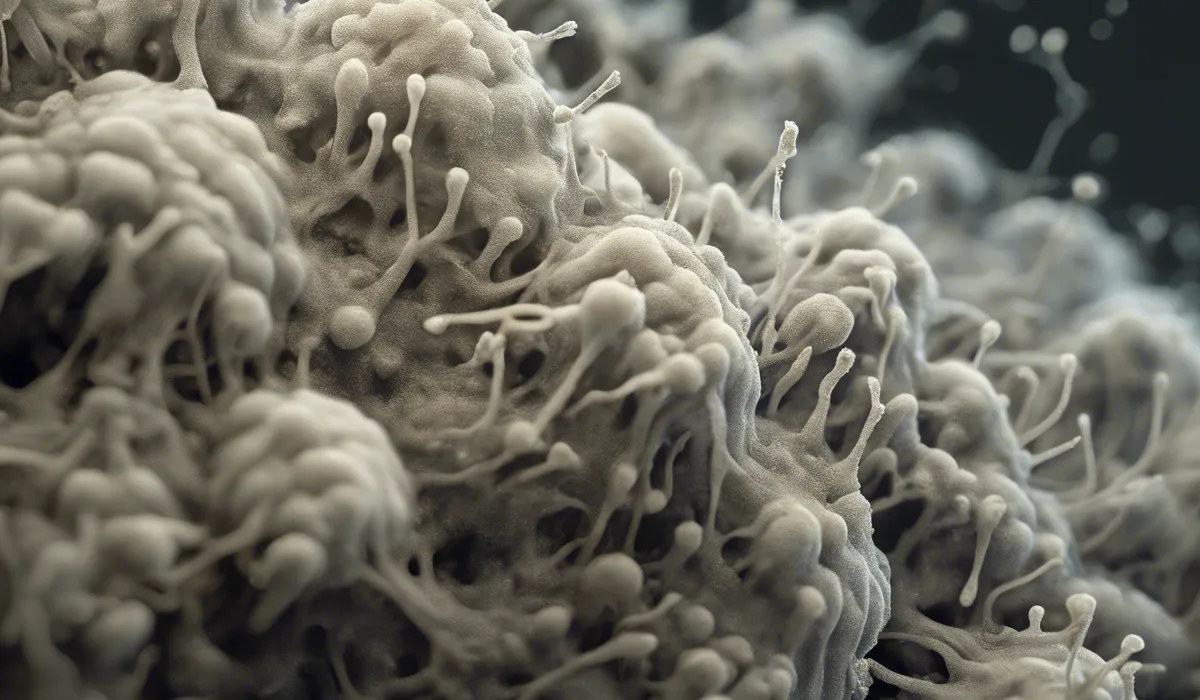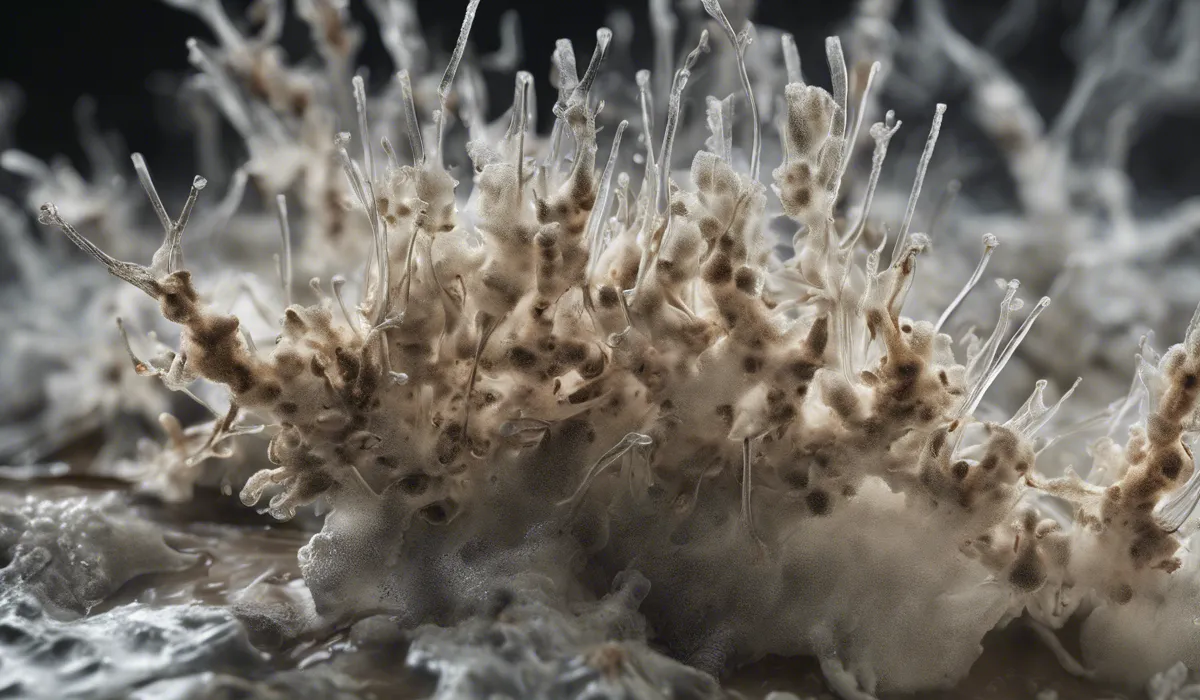Penicillium mold is generally not dangerous to healthy individuals, but it can trigger allergic reactions or respiratory issues in sensitive people. Certain species produce mycotoxins which may be harmful if ingested in large quantities. It’s typically not a high-risk mold.
Understanding Penicillium Mold

Definition of Penicillium Mold
Penicillium mold is a type of fungus that is easy to spot because of its blue or green color. It is often found in the air and on things we eat, like cheese and fruit.
This mold is made up of tiny organisms that can grow together in colonies. Even though it is quite common, not all Penicillium molds are bad. Some of them are very useful in making medicines and food.
Common Environments Where Penicillium Thrives
Penicillium mold likes places that are damp, cool, and have lots of oxygen. It often grows in soil, on food, inside houses, and in other indoor spaces if the conditions are right.
It can grow on walls, fabrics, and even in the dust. Keeping areas dry and clean is important to stop this mold from growing.
Types of Penicillium Species and Their Uses
There are many kinds of Penicillium molds, and each has its own job. For example, Penicillium chrysogenum is used to make the medicine penicillin, which helps fight off infections.
Other types are used to make tasty cheeses like Camembert and Roquefort. These molds are chosen carefully to make sure they are safe and good for our health.
Historical Significance of Penicillium in Medicine
The discovery of penicillin from Penicillium mold is a big deal in history. It was found by Alexander Fleming in 1928 and has saved countless lives since then. Before penicillin, simple infections could be deadly.
Now, it is used all over the world to treat bacterial infections, making it one of the most important discoveries in medicine.
Health Implications of Penicillium Exposure

Potential Allergic Reactions to Penicillium Mold
Some people might get allergic reactions if they breathe in Penicillium mold spores. These reactions can include sneezing, coughing, and itchy eyes.
People with asthma or allergies should be extra careful, as the mold can make their symptoms worse.
Symptoms of Mold-Induced Health Issues
When people are around Penicillium mold, they can have different health problems. Besides allergic reactions, they might feel tired, have headaches, or even trouble breathing.
If someone has these symptoms and knows they have been around mold, they should talk to a doctor to get help.
Risks for Immunocompromised Individuals
People with weak immune systems, like those who are sick or getting treatments like chemotherapy, need to be extra careful with Penicillium mold.
They can get infections more easily, which can be very serious. It is important for these people to stay away from places with a lot of mold.
Contrasting Penicillium Mold with Other Toxic Molds
Penicillium mold is not usually as dangerous as some other molds, like black mold, which can produce toxins that are harmful when breathed in.
However, certain Penicillium species can also make toxins called mycotoxins if the conditions are right. That is why it is still important to keep an eye out for any kind of mold at home and to get rid of it safely.
Prevention and Remediation Strategies

Tips for Preventing Mold Growth in Homes and Workplaces
To stop mold from growing, it helps to keep your home and workplace dry and clean. Fix leaks, use a dehumidifier, and make sure the air can flow well in rooms.
It is also good to clean places where mold likes to grow, like bathrooms and kitchens, with products that kill mold.
Safe Cleaning Practices for Dealing with Penicillium Mold
If you find Penicillium mold, do not touch it with your bare hands. Use gloves and a mask to keep from breathing in the spores.
You can clean small areas with soap and water or with vinegar. But, if the mold covers a big area, you might need special products or help from professionals.
Professional Remediation: When to Call the Experts
When mold is growing over a large space or if it keeps coming back after you clean, it is time to call in the experts.
They know how to get rid of mold safely and can make sure it does not come back. If someone in your home has health problems because of the mold, it is also a good idea to get professional help.
Long-Term Strategies for Maintaining a Mold-Free Environment
To keep mold away for good, you have to control moisture in your home. Check for leaks often, use fans in the bathroom and kitchen, and keep your home warm in cold weather to stop condensation.
It is also smart to use paint that stops mold in places that get wet a lot. Remember, keeping your home dry and clean is the best way to stop mold from growing.
FAQs About Penicillium Mold Danger
Is Penicillium mold harmful to everyone?
Penicillium mold is generally not dangerous to healthy individuals, but people with allergies or respiratory issues may be affected.
Can Penicillium mold cause allergic reactions?
Yes, Penicillium mold can trigger allergic reactions in sensitive people.
What happens if you breathe in Penicillium mold spores?
Inhaling Penicillium mold spores may cause respiratory issues, particularly in those with pre-existing conditions.
Are there any toxic substances produced by Penicillium mold?
Certain species of Penicillium mold produce mycotoxins, which can be harmful if ingested in large quantities.
Is it safe to have Penicillium mold in the home?
While it’s typically not a high-risk mold, it’s best to remove Penicillium mold from the home to prevent potential health issues.
Final Thoughts
Penicillium mold typically poses little threat to healthy individuals, but can cause allergic reactions or respiratory problems in those with sensitivities.
Some species secrete mycotoxins that could be harmful when consumed in significant amounts. However, it is generally considered a low-risk mold in terms of human health.
